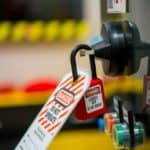Effectively maintaining and optimizing inventory storerooms is an often overlooked, critical component for the overall success of your organization. Poor stock management creates shortfalls leading to downtime, lost production and efficiency, and unhappy customers. With the focus on raw materials, it is easy to overlook the supply of spare parts that keep assets running correctly. Maintenance, repair, and operations (MRO) inventory needs at least as much attention as operation materials.
By applying the same level of focus to MRO materials as to operational supplies, your team can achieve smoother operations, minimize costly delays, and improve the quality and delivery of goods. Read on to learn how.
What is MRO Inventory Optimization?
Simply put, the goal of MRO inventory optimization is to strike a balance between having sufficient stock to prevent disruptions in operations while minimizing excess inventory that ties up your resources and capital.
As parts fail, maintaining optimal supply levels on hand reduces machine downtime. Inventory Optimization (IO) means developing a procedure to ensure that you have the correct parts available when needed. Many factors that have a significant impact come into play when making stocking decisions.
For example, an effective MRO strategy must minimize excess inventory to control costs while ensuring minimal impact on asset performance due to stockouts. Other factors include controlling risks due to long lead times, obsolete parts, rotating parts that must be repaired, or even fabrication in some instances.
Benefits of Inventory Optimization
MRO Inventory Optimization is a key area of Lifecycle Asset Management (LCAM) that is often overlooked and typically has huge opportunities for cost and efficiency improvements with a quick return on investment. Efficiently managing maintenance repairs and operational assets is essential to your company’s overall success. Maintaining accurate records, locations, and control of spare parts prevents maintenance and repair issues that halt production.
Here are some of the most impactful benefits of Inventory Optimization:
Reduced Downtime
All assets are subject to wear and tear. When equipment fails, it often disrupts an entire production line. It is common to not have parts in stock for the replacement of failed components. This requires emergency sourcing, additional unnecessary downtime, non-ideal part fabrication, reduced wrench time for technicians, and often leads to technicians or other employees driving for hours to obtain parts.
However, with a well-implemented asset management strategy utilizing a good critical spare parts process and methodology that drives optimized MRO inventory, repair crews will have the necessary parts to fix the asset. This minimizes the Mean Time to Repair (MTTR), which is a common metric to support asset performance and maintenance planning.
Less Inventory Waste
Unused parts cost money and take up warehouse space. Part costs combined with the typical holding cost (maintaining inventory items costs an average of 20-30 percent of inventory value) have a very significant impact on costs. In many cases, parts become obsolete as assets age and are replaced with new equipment. These parts can sit for years unidentified in storerooms in the absence of good inventory management processes which leads to paying extra fees to dispose of these unused items.
Reduced Maintenance Budget
MRO IO lowers general maintenance costs by preventing excessive stock levels and improving maintenance schedules. A key metric to support managing inventory levels is tracking the inventory turn ratio. This is how often the inventory item “turns” over in a year.
Best practice recommendations are between two and three turns per year for MRO items. When companies combine inventory optimization with a proactive maintenance plan including critical spare parts planning, kitting, and PdM activities, it can significantly reduce extra costs related to downtime and emergency repairs.
Streamlined Operations
Effective MRO processes will minimize your time spent searching for parts and increase wrench time. This allows valuable resources to be allocated to create more productivity, reduce downtime, and improve overall operational performance.
MRO IO and Improved Asset Performance
The goal of Asset Lifecycle Management is to maximize the performance of assets throughout the estimated lifecycle of the asset. There are several metrics and calculations to support managing the cost and replacement of assets, but in short, the longer your asset performs consistently and efficiently, the better the return on investment for your business.
A well-designed MRO inventory strategy combined with good maintenance practices will keep assets running at their best and extend their usable lifetime.
In an ideal situation, the MRO process will incorporate traditional and predictive approaches toward maintenance. Using historical data for work execution, predictive maintenance indicators, and tracking part performance will help calculate the ideal time for replacing a part based on its expected lifespan and performance indicators.
Many parts lose efficiency as they come to the end of their usable life, lowering the productivity of the entire asset, increasing energy consumption, and even creating intermittent issues with the quality of goods produced. Proactively replacing parts at a properly predetermined threshold will keep your assets running at peak performance levels.
Challenges to MRO Inventory Optimization
Longstanding, inefficient practices are often significant challenges to optimizing your spare parts inventory. Changing the culture of an organization is one of the most challenging components of the process of improvement.
Without proper training resources and helping them understand the benefits to themselves and the organization, it can be difficult to change how your employees manage the parts stockroom, limiting even the most comprehensive MRO efforts. However, inventory optimization can only happen by developing a strategic approach and facing these issues head-on:
Incomplete Information
When an asset breaks down, repair crews are in for an unpleasant surprise if no one knows exactly what parts are on hand or where to locate them. Smaller operations may rely on the memories of one or two employees. Your facility can only be sure of what is available with organized inventory management systems and processes.
Lack of Integration
Siloed parts data may hamper your maintenance efforts in a non-integrated management system. This breakdown is especially problematic with different departments ordering parts with limited visibility to the overall system.
With an integrated inventory management system, repair crews and the purchasing department can see your available inventory. Poorly designed processes and systems also lead to the inability to track part usage to specific assets to track cost and performance.
Manual Entry Errors
It is frustrating when a mislabeled part of information causes delays. Unfortunately, using multiple applications, poor receiving techniques, and manual entry techniques lead to mistakes and non-standard data sets that are a frequent source of problems.
Using Bar code scanning and properly integrated applications to manage parts are examples of methods that can prevent many of these types of errors.
Tools and Strategies for Optimizing Parts Inventory
The possibilities for MRO IO have improved dramatically in the past decades. Advances in networking and communication make it much easier for you to track spare parts. Consider implementing these technology-powered features into your MRO strategy:
Management Software
Inventory management software has gone far beyond basic spreadsheets. Data-driven platforms allow your team to see in-depth information about every part available at their facility. The software can throw alerts about potential shortfalls, obsolete inventory, and upcoming repairs.
All best-of-breed Computerized Maintenance Management Systems include inventory management modules designed specifically to manage MRO inventory. They incorporate process functionality to not only manage optimal stock levels, but also allow organizations to track part utilization by asset for cost tracking, performance, and strategic planning of work activities.
Data Integration
Most modern applications provide standard integration functionality to communicate with other applications that may be utilized for the procurement of goods and services. This helps streamline activities and the flow of standardization throughout the organization.
Integrating systems allows consistent standardized data, reduced manual entry, significantly increased efficiency, and traceability of items throughout the organization.
Standardized MRO Process and Governance
Tribal inventory knowledge must be paired with procedural clarity for ideal optimization. To begin or improve effective MRO storeroom management, organizations must develop consistent standardized processes. Doing so will ensure the consistent execution of key storeroom activities including orders, cycle counting, stock level optimization, cost controls, locating and identifying, issuing, kitting, and reporting.
A governance team should also be established with clear objectives and oversight to manage and drive continuous improvement as the methodology and processes mature.
Optimizing the MRO Inventories for Your Energized Assets
SEAM Group works with global companies to optimize the maintenance and safety of energized assets. Our team can help develop optimization strategies for your parts inventory to reduce asset downtime and streamline repairs. Keeping your equipment operational and safe helps your business thrive.





